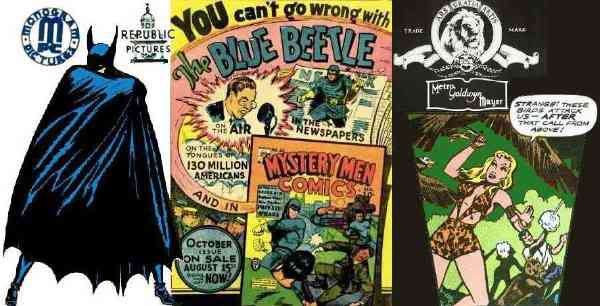
Jules Feiffer noted the Golden Age Batman's owing more to "rich idlers who put on masks" than Superman, including the Scarlet Pimpernel, Zorro, and especially the Green Hornet. "Batman got more meaningfully into the fray and, in consequence, was more clobbered... There was some reason to believe he had a glass jaw... Superman's superiority lay in the offense, Batman's lay in the rebound... With Superman we won; with Batman we held out own. Individual preferences were based on the ambitions and arrogance of one's fantasies." Feiffer suspected Batman fans had healthier egos, but with his poor marks and being bad with his hands, "I preferred to play it safe and be Superman."
"What made Batman interesting, then, was not his strength but his storyline... Kane's early drawings, pretentious and stiff, coordinated perfectly with his early writing technique -- a form of florid pre-literacy so typical of comic books of that day... Kane's strength, as did Shuster's, lay not in not in his draftsmanship (which was never quite believable), but in his total involvement in what he was doing (which made everything believable). However badly drawn and crudely written, Batman's world took control of the reader."
Like the Phantom, Batman helped popularize the notion that "when you put on your mask, your eyes disappeared. Two white slits showed -- that was all. If that didn't strike terror into the hearts of evildoers, nothing would."
The Batman's world was the most cinematic of his publishing line. "For just as the movie studios had their individual trademarks... so did comic books. National, who produced the D.C. line, was the MGM of the field. It had the great stars, the crisp-brittle lighting, the elder statesman touch -- smoothly exciting, eschewing the more boisterous effects of its less wealthy competitors... The opposite extreme was Fox -- the Monogram Studios of the industry. Fox had the best covers and the worst insides... Since the covers of Fox's books were drawn by good men and the insides drawn by bad men, the hero on the cover could only be connected to his facsimile on the inside by the design of his leotards... a slender, inadequate-looking hero who beat up slender, inadequate-looking criminals." Feiffer disparaged a pseudo-star Fox foisted on the public: Blue Beetle. The original was a moonlighting cop whose costume owed much to the Phantom, and somehow was supposed to terrify crooks. "He was a great favorite for a far longer time than he deserved."
"As Republic was to Monogram, Fiction House was to Fox. Its one lasting contribution: Sheena, Queen of the Jungle..." Her boyfriend Bob was cast in the Steve Trevor mode, and their adventures were of little interest to Feiffer. "Beating up lions did not particularly interest me; my problem was with people." His distaste extended to the rest of Fiction House's line, down to their "boxed, constipated" dialogue balloons. "Rectangular balloons were depressants... textbooky. They were no more to be trusted than those cartoons that gave up balloons entirely and ran an open narrative across the bottom of the panels -- cartoons trying their damnedest not to look or sound like cartoons -- set in the past tense, full of he saids and she saids. The past tense was a violation of comic-book decorum..."
The Great Comic Book Heroes is available from publisher Fantagraphics Books and from Amazon.com in either the slim essay-only or original hardcover formats, the latter with copious Golden Age reprints.


No comments:
Post a Comment